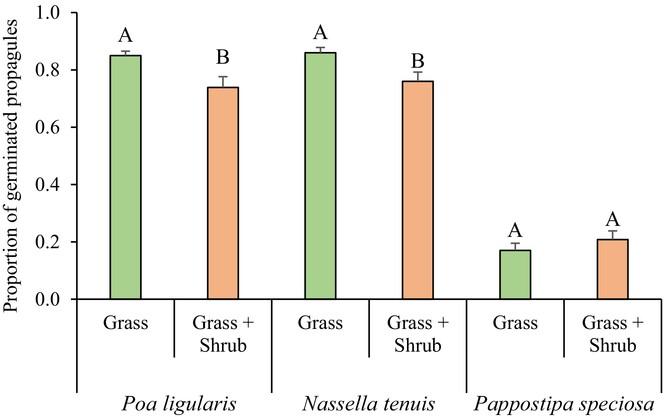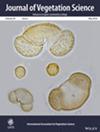Effects of neighbor shrub propagules and soils from shrubby patches on perennial grass germination in arid rangelands of the Patagonia Monte, Argentina
Abstract
Question
Do shrubs negatively affect the germination of perennial grass species in regeneration microsites? We experimentally analyzed the effect of soils from plant patches dominated by two shrub species (Larrea divaricata and Schinus johnstonii) and their propagules on the germination of three co-dominant herbivore-preferred perennial grass species (Poa ligularis, Nassella tenuis and Pappostipa speciosa).
Location
Patagonian Monte, Chubut Province, Argentina (42°07′ S, 64°59′ W; 43°06′ S, 65°43′ W; 42°29′ S, 66°34′ W).
Methods
We conducted two simultaneous microcosm experiments. In the first experiment, we sowed perennial grass propagules of the three species alone and combined with non-scarified shrub propagules in Petri dishes with three substrate types (filter paper, inert soil and soil from shrub patches). In the second experiment, we sowed perennial grass propagules of each species combined with scarified and non-scarified propagules of both shrub species in Petri dishes with soil taken from plant patches dominated by L. divaricata and by S. johnstonii. Both experiments lasted 3 months. We calculated the germination proportion and mean germination time (MGT) of propagules for each perennial grass species in each treatment.
Results
Propagules from neighboring shrubs had a clearer negative effect on grass germination compared with shrub soils. Shrub propagules negatively affected the germination proportion of P. ligularis and N. tenuis, and induced longer MGT in the three perennial grass species. The combination of S. johnstonii soil and propagules negatively affected P. ligularis and P. speciosa germination. The combination of L. divaricata soil and scarified propagules completely inhibited P. speciosa germination.
Conclusions
Our results highlighted the complexity of interactions between shrubs with high phenolic contents (soils and propagules) and the germination of perennial grass species in arid environments. Schinus johnstonii soil and propagules had stronger effects on perennial grass germination than L. divaricata soil and propagules. The negative effects of shrubs on microsite quality and germination processes depended on the specific shrub/grass interaction.


 求助内容:
求助内容: 应助结果提醒方式:
应助结果提醒方式:


